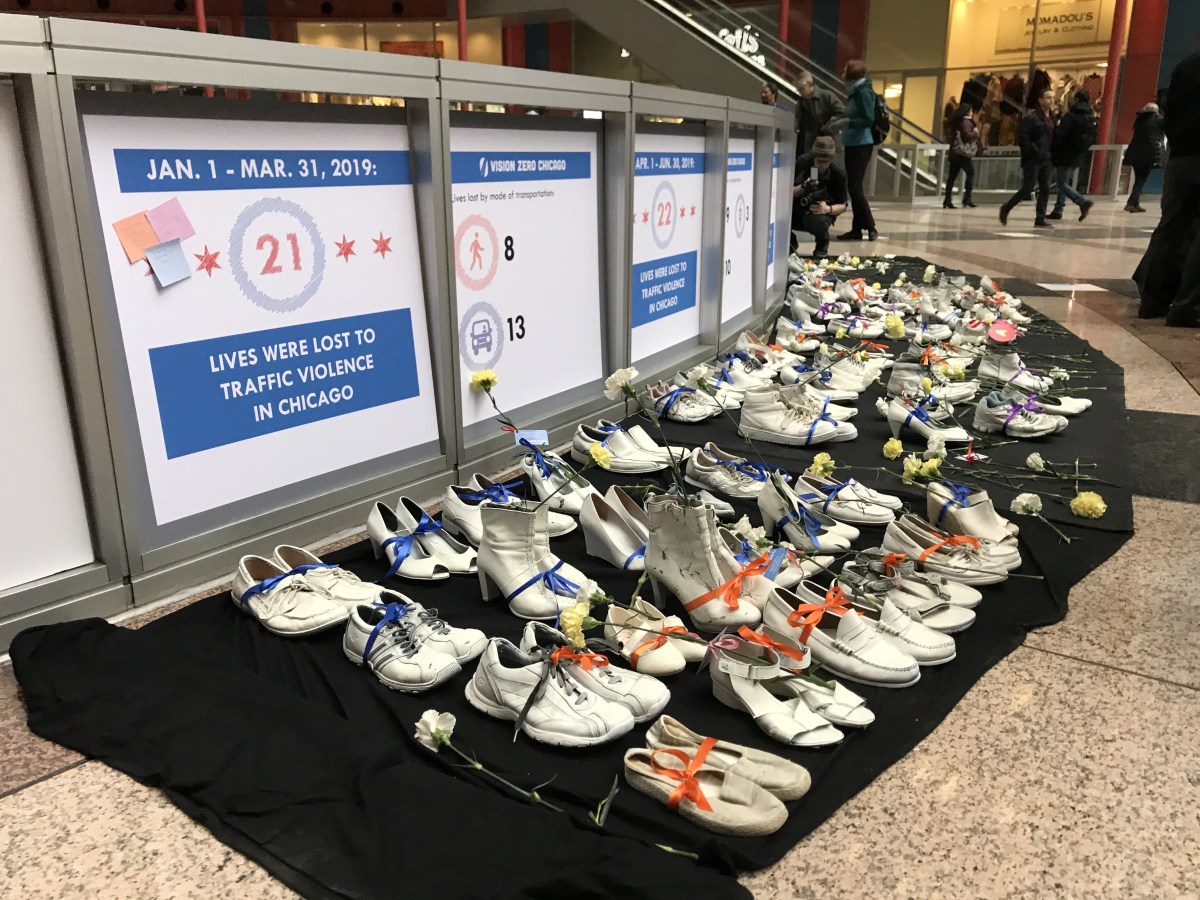This Sunday, Nov. 20 is the annual World Day of Remembrance for Road Traffic Victims, which will see a record number of U.S. communities come together to demand change to stem the mounting roadway safety crisis. More than 50 cities are planning events in places as far-flung as Boise, Idaho and Brevard County, Fla., all of them giving voice to a crisis that has been ignored for too long. There will be solemn processions, moments of silence, and heart wrenching words from grieving parents — many of whom would give anything not to be involuntary members of the Vision Zero movement.
Never has the call to prevent traffic deaths had such a bold and visible public presence across the U.S. And the sheer number of demonstrations reflects a chilling new reality: that the number of family members, friends and neighbors who were hit and killed while walking reached a 40-year high last year. Overall roadway fatalities, meanwhile, set a 16-year record in 2021. None of us are safe, no matter how we get around.
For anyone wondering if this is part of a global trend toward increasingly dangerous roadway conditions, the answer is a resounding “no.” Our supposedly “advanced” nation ranks a dismal 47th amongst 54 high-income nations, according to the World Health Organization. In fact, the fatality rate in the U.S. is more than twice that of both Canada and Australia, more than three times higher than Israel or Japan, and six times higher than Norway.
But we already know these statistics. The question is: what are we going to do about them?
After this year’s World Day of Remembrance memorials and solemn speeches end, it's critical that we can stay angry and to take action. Here are just a few ways we can do that.
- Recognize deadly patterns in your community — and work to change them. If your town, city or state is not already tracking and publicly sharing information about where traffic injuries and fatalities are happening, push for them to do so. Demand that transportation leaders analyze severe crash data alongside demographics to better understand which populations are most impacted. (Spoiler alert: traffic safety is usually worst in communities of color and low-income, because theirs are the streets that are most often designed in dangerous ways).
- Don’t take “no” for an answer. Vision Zero advocates hear a wide range of pushback in the fight to save lives. That there’s “not enough money,” or “not enough staff”; that “our community is different so those solutions won’t work”; or even that “people are just crazy, and things will never change.” None of these excuses are acceptable. There’s always enough money to save lives, and dangerous driving behaviors will change if we effectively change the environment and systems in which we move.
- Recognize our agency. The very people who are likely to say that achieving Vision Zero is impossible are often those that have the most power to achieve it – even if they don't realize it. Funds and staffing can be found when politicians want to find them, especially when voters join forces to demand safe streets. Don’t let anyone slow-walk safety, because effective improvements can be made quickly and cheaply — if we demand them.
- Bring awareness and urgency to everything you do. Use your position, whatever that is – whether that’s a feisty mom, or a school board official, or a city planner – to show people that we can, and must, reach Vision Zero. Write letters to the editor of your local paper and contact media stations to educate them on why words matter — because no “crash” is an “accident,” and no traffic violence victim is de facto to blame for their own death. Request a meeting with your city council representative to discuss the unsafe locations in your district and stay persistent until we fix our deadly streets.
We should not put the burden on grieving parents, children, spouses and friends to bring attention to the roadway safety crisis, or to fight for action to save lives. And we should be able to expect our government officials and relevant industry leaders to make public safety their number one priority.
Right now, though, those leaders are failing us. Too many of America’s roads are designed for speed, not safety. The auto industry is super-sizing the motor vehicle fleet, and those decisions are hurting and killing record numbers of innocent people every day. Meanwhile, tax dollars are funding the next generation of electric vehicles that may reduce emissions, but are no less dangerous for other road users.
And we’re being made to believe this is all out of our control.
This year’s World Day of Remembrance, let’s remember this: traffic deaths and serious injuries are preventable. And doing it is absolutely within our control.
Leah Shahum is the founder and director of Vision Zero Network, a national campaign supporting communities working toward Vision Zero — zero traffic fatalities and severe injuries. The Network helps communities develop and share best practices for safe mobility for all road users.







